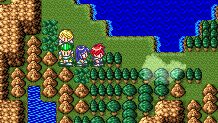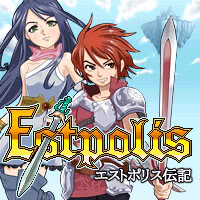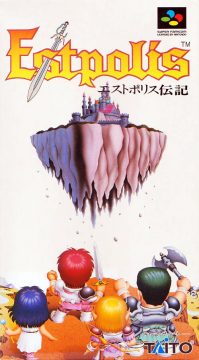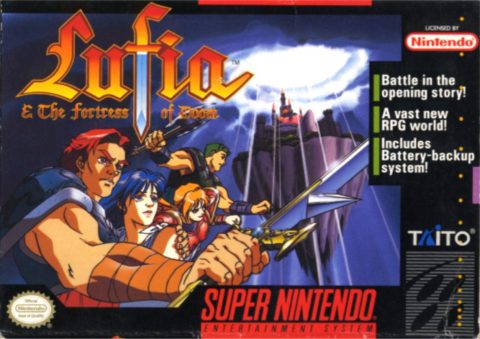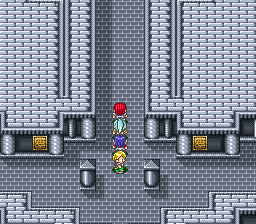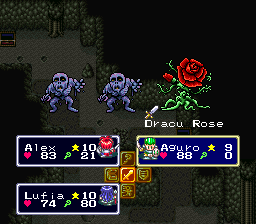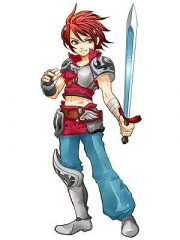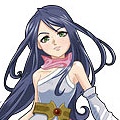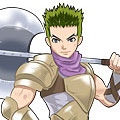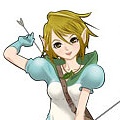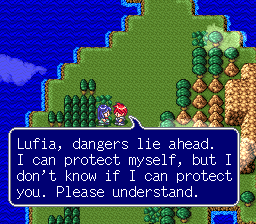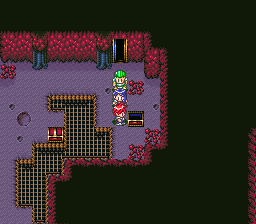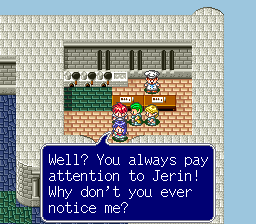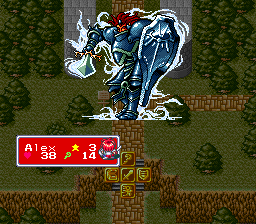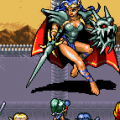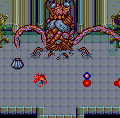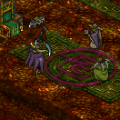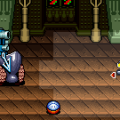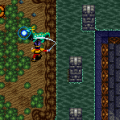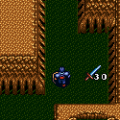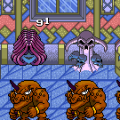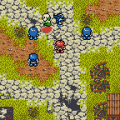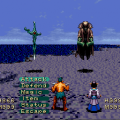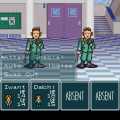- Lufia & The Fortress of Doom
- Lufia II: Rise of the Sinistrals
- Lufia: The Legend Returns
- Lufia: The Ruins of Lore
- Lufia: Curse of the Sinistrals
The release of Final Fantasy II (Final Fantasy IV) lead to a boost of popularity for console RPGs in the US, particularly Japanese titles. While Dragon Quest‘s success in Japan lead to the release of numerous games mimicking that style in Japan, that did not necessarily lead to success here in the US, with ports of Western PC RPGs being more likely to get a release than localized Japanese titles. The success of Final Fantasy II changed all that. Among the games in its wake was Lufia & The Fortress of Doom, the debut title from the Japanese developer Neverland, and published by Taito. The series would get three follow up titles: a prequel on the SNES, Lufia II: The Rise of the Sinistrals; a sequel on the Game Boy Color, Lufia: The Legend Returns; and a side story on the Game Boy Advance – Lufia: The Ruins of Lore. Seven years after this last installment was released, the series received new life in the form of a remake. Lufia II was remade for the Nintendo DS as Lufia: Curse of the Sinistrals – an action RPG telling a modified version of the original game’s story.
In Japan, the series is known as Estpolis Denki (“Record of Estpolis”). In North America, the series got its name from one of the main characters in the first game. Even though Lufia herself is absent from all successive games, the title stuck. The series also features one group of enemies as recurring antagonists throughout the series – the Sinistrals (“kyoushin” or “mad gods” in the Japanese version), four beings that are pure forces of evil that regularly menace the land and have to be repelled by a band of heroes each time. They seem conceptually inspired by the Four Horsemen of the Apocalypse from the Book of Revelation, though none of their designs or powers are taken from them.
Lufia and The Fortres of Doom opens in medias res, depicting the first band of heroes – Guy, Maxim, Selan (Serena in Japanese) and Artea (Arty in the Japanese release) taking on the Sinistrals. In these brief moments, it’s established that Maxim and Selan are in love, and that they’ve had a child. The heroes defeat the Sinistrals, and while Guy and Artea are able to escape with a teleport spell, Maxim and Selan are unable to escape, and they perish. 100 years later, the Sinistrals return, and it’s up to a new generation of heroes to defeat them once again.
Characters
Hero
The main character, whom the player can name freely (so long as it’s five characters or less). He is a typical anime protagonist, with bright red hair. He is not, however, a silent protagonist, and he will converse with other party members and with NPCs at various points in the game. He’s one of the two most powerful melee fighters in the party, and is also capable of casting defensive magic. He’s also the descendent of Maxim and Selan.
Lufia
The main character’s childhood friend, and his love interest. Lufia is the most powerful spell-caster in the game, particularly when it comes to offensive spells and buff/de-buff spells, making her the party’s most useful combat spell-caster. Personality wise, she is something of a tsundere, chewing out the Hero when she thinks he might be straying, or is considering leaving her behind, while also becoming somewhat shy when he gets romantic-ish.
Aguro
Knight of the army of Lorbenia, and the only party member who has no spell casting ability at all. He is a stronger melee fighter than the main character is. Aguro considers himself a noble figure, though he is not above bickering with the next party member to join like an they’re an old married couple.
Jerin
A half-Elven girl who the party rescues from being sacrificed to monsters. She joins the party and, as mentioned earlier, bickers frequently with Aguro. While she is not as powerful a spell caster as Lufia, Jerin gains healing spells more quickly, and is the only party member who can cast a “Raise” spell, making her the ideal dedicated healer for the party.
Lufia plays a lot like an simpler version Final Fantasy IV. Where FFIV kept the player on their toes with its Active Time Battle system, and the rotating cast of party members, Lufia slowly builds up a party of four characters, and they stay with you for the entire game. The spell casters have a lot of overlap over certain kinds of spells (particularly basic healing spells), but they fit into the same general categories of healing, elemental damage, status, and buffs as Final Fantasy‘s spells. The battle command interface is on a five-tile cross that matches the directional pad, making it a little different from the norm. The player is also able to find a boat that opens up the game’s overworld considerably as well.
Graphically, the game looks very bland. The battles are set up similar to Dragon Quest, with static pictures of enemies lined up in the middle of the screen. However, sprites of all of the main characters appear at the bottom next to their status windows, and act out assorted attacks. It makes combat a little more visually engaging, but it’s still rather cheap. There are very few different tile-sets for the various dungeons and cities, so one dungeon will visually be identical, in terms of tiles and colors, to the next dungeon.
Characters have a rigid level progression path, with no choices over what powers they gain, what attribute bonuses they get, or anything else. Instead, any customization of your party members is done through items. Aside from standard weapons and armor, there are accessories that can provide an attribute boost, increase the power of certain spells or increase damage against certain kinds of enemies. However, in several dungeons in the game it is possible to get cursed items, an idea from the original Dungeons and Dragons and adopted from Dragon Quest. Cursed items cannot be un-equipped and can drain the equipping character’s health. Only going to a shrine can get the item unequipped so it can then be sold. There are also expendable items that will permanently boost either a characters HP or MP, or one of their attributes. There’s also an optional subquest involving collecting dragon eggs scattered throughout the world, and exchanging these will grant extra bonuses.
Lufia has an interesting setup, but lacks the niceties of later 16-bit RPGs – there’s very little in the way of character customization, there’s too much tedious grinding, and it doesn’t quite possess the drama or the charm of a Final Fantasy or Dragon Quest. Thankfully, the later titles build off this title and offer substantial improvements.
The US version of the game is fairly close to the Japanese version, aside from suffering from the standard Nintendo of America policies regarding use of crosses in temples. Additionally, in the Japanese version you could press the ‘X’ button to get a brief description of the item, but this was removed from the English release.
In 1994, Taito announced that Lufia was being ported to the Genesis. It put advertisements in magazines, though it didn’t have any screenshots. The only time the game was publicly displayed was at a CES trade show, which showed off some very incomplete footage. In 1995, the game was quietly cancelled. Development had been outsourced to an American company named Teknocrest, and was given an extremely tight deadline to be finished. In the end, the developers strung Taito along and barely worked on it, creating only a few demos. A ROM was released showing off the title screen and a small dungeon to walk around. The visuals are essentially identical to the SNES release.
In 2009, Taito ported Estpolis to mobile phones in Japan. Other than some new supplemental artwork – which appears in the character portraits above, since none were featured for the original release – and a slightly different screen ratio, the game uses the same graphics.
